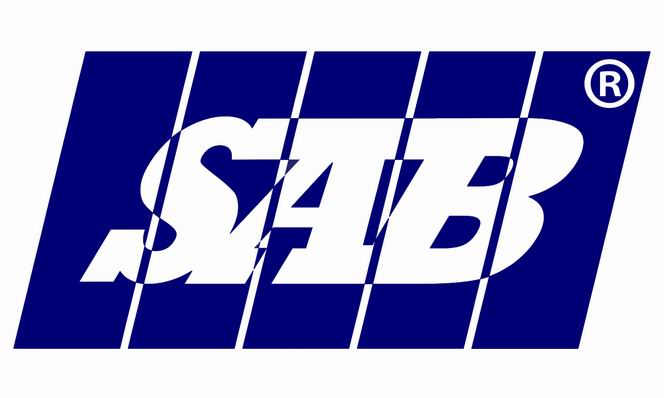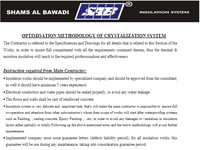2. Nitoflor FC150 - Page 2 of 4 Fosroc Nitoflor FC150 Acids Lactic acid 10% : Resistant Citric acid 10% : Resistant Acetic acid 10% : Resistant Hydrochloric acid 50% : Resistant Sulphuric acid 50% : Resistant Nitric acid 25% : Resistant Alkalis Sodium hydroxide 50% : Resistant Ammonia (0.880) 10% : Resistant Solvents Petrol : Resistant Oil : Resistant Kerosene : Resistant Butanol : Resistant Skydrol : Resistant Industrial Methylated spirits : Resistant Others Saturated sugar solution : Resistant Urea (saturated) : Resistant Bleach 5% : Resistant All the above properties have been determined by laboratory controlled tests and are in excess of those expected in practice. Nevertheless, success in use will be determined by the implementation of good housekeeping practices. Instructions for use Surface preparation The long term durability of any resin floor system is deter - mined by the adhesive bond achieved between the flooring material and the substrate. It is most important therefore that substrates are correctly prepared prior to application. New concrete floors These should normally have been placed for at least 28 days and have a moisture content of less than 5%. Floors should be sound and free from contamination such as oil and grease, mortar and paint splashes or curing compound residues. Excess laitance deposits are best removed by light mechani - cal scabbling, grinding or grit/captive blasting followed by vacuum cleaning to remove dust debris. Old concrete floors A sound, clean substrate is essential to achieve maximum adhesion. As for new concrete floors dry removal of laitance deposits are best removed by light mechanical scabbling, grinding or grit/captive blasting. Oil and grease penetration should be removed by the use of a proprietary chemical degreaser or by hot compressed air treatment. Any damaged areas or surface irregularities should be repaired using one of the Nitoflor EU * † range products. Priming Priming is not normally required provided the substrate is sound, untreated and good quality nonporous concrete. If any doubts exist of the quality of the concrete, or if it is porous it should be primed with Nitoprime SP*. Contact the local Fosroc office for advice. Nitoprime SP should be mixed in the proportions supplied. Add the entire contents of the hardener can to the base can. When thoroughly mixed, preferably using a slow speed drill and paddle, the primer should be applied in a thin continuous film, using rollers or stiff brushes. Work the primer well into the surface of the concrete taking care to avoid ponding or over application. The primer should be left to achieve a tack-free condition before applying the top coat. A second coat of primer may be required if the substrate is excessively porous. Mixing the coating (Mix 1 colour pot of 0.35L with 4.15L pack of base & hardener / Mix 4 colour pots of 0.35L with 16.6L pack of base & hardener) The base and hardener components of Nitoflor FC150 should be thoroughly stirred. The entire contents of the colour pot should be poured into the base container and the two materi - als mixed thoroughly, then add the hardener component and mix for at least 3 minutes. The use of a heavy-duty slow speed, flameproof or air driven drill fitted with a Fosroc Mixing Paddle (MR3) is desirable. Mix these components in the quantities supplied taking care to ensure all containers are scraped clean. Do not add solvent thinners at any time. Standard application The first coat of Nitoflor FC150 should be applied using a good quality medium haired pile roller, suitable for epoxy application, or squeegee to achieve a continuous coating. Ensure that loose hairs on the roller are removed before use. A minimum film thickness of 200 microns should be applied. This can be increased where specifications demand. When the base coat has reached initial cure (12 hours @ 20°C or 5 hours at 35°C). The top coat can be applied by medium haired roller, at minimum film thickness of 200 microns. Care should be taken to ensure that a continuous film is achieved.
4. UAE/0079/18/R Fosroc Nitoflor FC150 Al Gurg Fosroc LLC Post Box 657, Dubai United Arab Emirates www.fosroc.com Important note Fosroc products are guaranteed against defective materials and manufacture and are sold subject to its standard Conditions for the Supply of Goods and Service. All Fosroc datasheets are updated on a regular basis. It is the user’s responsibility to obtain the latest version. Head Office telephone: (+9714) 2039699 fax: (+9714) 2859649 email: agf@fosroc.com Regional offices Abu Dhabi, Al Gurg Fosroc telephone: 673 1779 fax: 673 1449 email: abudhabi@fosroc.com Bahrain, YBA Kanoo telephone: 17738200 fax: 17732828 email: bahrain@fosroc.com Kuwait, Boodai telephone: 4817618 fax: 4832124 email: kuwait@fosroc.com Oman, Al Amana telephone: 24815080 fax: 24817554 email: oman@fosroc.com * Denotes the trademark of Fosroc International Limited † See separate data sheet Storage conditions Store under warehouse conditions, below 35°C in the original, unopened packs. For further information, refer to the Product Material Safety Data Sheet. Cleaning and disposal Spillages of component products should be absorbed on to earth, sand or other inert material and transferred to a suitable vessel. Disposal of such spillages or empty packing should be in accordance with local waste disposal regula - tions. Precautions Health and safety Nitoflor FC150, Nitoprime SP and Fosroc Solvent 102 should not come in contact with skin and eyes or be swallowed. Avoid prolonged inhalation of solvent vapours. Some people are sensitive to epoxy resins, hardeners and solvents. Gloves, goggles and a barrier cream such as Kerodex Antisolvent or Rozalex Antipaint should be used. Ensure adequate ventilation and if working in enclosed areas, use suitable breathing apparatus. If mixed resin comes into contact with the skin, it must be removed before it hardens with a resin removing cream such as Kerocleanse Standard Grade Skin Cleanser or Rozaklens Industrial Skin Cleanser, followed by washing with soap. Should accidental eye contamination occur, wash well with plenty of clean water and seek medical advice. If swallowed, seek medical attention immediately. Do not induce vomiting. Fire Nitoprime SP and Fosroc Solvent 102 are flammable. Do not expose to naked flames or other source of ignition. No smoking during use. Containers should be tightly sealed when not in use. In the event of a fire, extinguish with CO 2 or foam. Flash points Nitoprime SP : 57°C Fosroc Solvent 102 : 33°C For further information, refer to the product Material Safety Data Sheet. Additional Information Fosroc manufactures a wide range of complementary products which include : waterproofing membranes & waterstops joint sealants & filler boards cementitious & epoxy grouts specialised flooring materials Fosroc additionally offers a comprehensive package of products specifically designed for the repair and refurbish - ment of damaged concrete. Fosroc’s ‘Systematic Approach’ to concrete repair features the following : hand-placed repair mortars spray grade repair mortars fluid micro-concretes chemically resistant epoxy mortars anti-carbonation/anti-chloride protective coatings chemical and abrasion resistant coatings For further information on any of the above, please consult your local Fosroc office - as below. “Refer to www.tbwcert.com for validity and full documentation”
1. Nitoflor FC150 constructive solutions Fosroc Nitoflor FC150 Solvent free, high build , epoxy resin floor coating Uses Nitoflor FC150 provides a hard wearing, chemical and abrasion resistant floor finish. It is ideally suited for use in wet areas where a high degree of resistance to chemicals, oils and grease is required such as : Dairies Soft drinks production facilities Chemical manufacturing plants Car parks and workshops Advantages Durable, low maintenance costs. Proven against a wide range of industrial chemicals. Solvent free - no odour during application. Slip resistant - different textures available to suit condi - tions to avoid slipping. Liquid applied providing complete protection. Available in a wide range of colours to improve the working environment and identify slip hazard areas. Specially formulated for use in Middle East conditions. Description Nitoflor FC150 is a solvent free system based on epoxy resins and curing agents specially selected for their ability to withstand chemical attack. The system consists of pre- weighed base & hardener components and a Nitoflor colour pack, all of which contain reactive elements that are essential to the installation of the system. A slip resistant texture can be provided by the use of one of a range of Nitoflor Antislip Grains which have been carefully graded to ensure an even texture. Specification The epoxy resin floor coating shall be Nitoflor FC150 from Fosroc. The total dry film thickness of the coating shall be a minimum of 400 microns and shall have a compressive strength of 70 N/mm 2 , flexural strength of 40 N/mm 2 and a tensile strength of 20 N/mm 2 . The floor shall be prepared and the coating mixed and applied in accordance with the manufacturer’s current data sheet. “Nitoflor FC150 complies with ASTM E648 for average critical radiant flux : Class I” Design criteria Nitoflor FC150 is applied as a floor coating system compris - ing of two top coats (depending on the substrate conditions a primer might be required), each top coat to be a minimum of 200 microns thick. To provide a slip resistant texture, the first top coat can be dressed with Nitoflor Antislip Grains*. Typical Properties The following values were obtained when tested at 20°C and 30°C. @ 20°C @ 30°C Pot life : 40 mins 20 mins Cure time : 24 hours 18 hours Maximum time between coats : 36 hours 15 hours Light traffic use after : 24 hours 18 hours Full traffic use after : 48 hours 24 hours Dry Slip Resistance @ 23°C : Extremely low (UK SRG classification) Resistance to chemical spillage : 7 days Compressive strength : 70 N/mm 2 Flexural strength : 40 N/mm 2 Tensile strength ( ASTM D638-99) : 20 N/mm 2 Water absorption : <0.1% ( ASTM D570-98) Shore D Hardness : 77 - 85 (ASTM D2240 : 1996) Reaction to fire : Class A (for Flame Spread Index(FSI) and Smoke Development Index(SDI)) VOC : 6.4 g/l Note: The values given are typical figures achieved in laboratory tests. Actual values obtained on-site may show variations from those quoted. Chemical resistance Fully cured Nitoflor FC150 samples have been tested in a wide range of aggressive chemicals commonly found in industrial environments. Tests were performed in accord - ance to ASTM D 543 standards over 168 hours (7 days at 23°C + 2)
3. Nitoflor FC150 - Page 3 of 4 Fosroc Nitoflor FC150 Antislip application If a slip resistant texture is required, the base coat shall be applied as per the standard application, but at a minimum film thickness of 250 microns. The base coat should then be dressed with the chosen Nitoflor Antislip Grain. This should be done as soon as possible after laying. The recommended pro - cedure is to completely blind the base coat i.e. apply excess dressing aggregate to completely obliterate the base coating. Alternatively, the Nitoflor Antislip Grains can be broadcast in a light random dressing to provide a less dense finish. When the base coat has reached initial cure (12 hours @ 20°C or 5 hours at 35°C), the excess aggregate should be vacuum cleaned from the surface. The top coat can now be applied by medium haired roller, at a rate of 4.0m 2 /litre. Care should be taken to ensure that a continuous film is achieved and the rough surface, caused by the aggregate, is completely sealed. This top coat must be applied within 36 hours @ 20°C (15 hours @ 35°C) of the application of the first coat. Expansion joints Expansion joints in the existing substrate must be retained and continued through the Nitoflor FC150 topping. Fosroc have a range of joint sealants specifically designed for flooring, contact local Fosroc office for advice. Cleaning Tools and equipment should be cleaned with Fosroc Solvent 102* immediately after use. Spillages should be absorbed with sand or sawdust and disposed of in accordance with local regulations. Limitations - Nitoflor FC150 should not be applied on to surfaces known to, or likely to suffer from, rising dampness, potential osmosis problems or have a relative humidity greater than 75% as measured in accordance with BS 8203 Appendix A, or by a Hammond concrete/mortar moisture tester type COCO. - Fosroc does not recommend acid etching as a method of floor preparation. If used, the method should be approved by the project consultant. - In common with all epoxy materials, some slight shade changes may be experienced over the long term when placed in adverse exposure conditions. Any such change in shade is not regarded as being detremental to perfor - mance. Technical support Fosroc offers a comprehensive technical support service to specifiers, end users and contractors. It is also able to offer on-site technical assistance, an AutoCAD facility and dedicat - ed specification assistance in locations all over the world. Estimating Supply Nitoprime SP : 4 & 8 litre packs Nitoflor FC150 (Including colour pack) : 4.5 & 18 litre packs 4.5 litre =(4.15 litre neutral + 0.35 litre Colour pot) 18 litre =(16.6 litre neutral + 4 x 0.35 litre Colour pots) Nitoflor Antislip Grains : 25 kg bags Fosroc Solvent 102 : 5 litre cans Standard coverage Nitoprime SP : 8m 2 /litre Nitoflor FC150 (base coat) : 5.0m 2 /litre @ 200 microns wft Nitoflor FC150 (top coat) : 5.0m 2 /litre @ 200 microns wft Coverage - Antislip (approx.) (for medium texture) Nitoprime SP : 8m²/litre Nitoflor FC150 (base coat) : 4.0m 2 /litre @ 250 microns wft Antislip Grain No 2* : 1.25-3m 2 /kg Nitoflor FC150 (top coat) : 4.0m 2 /litre Estimated system thickness : 1.5 - 2.0mm (for fine texture) Nitoprime SP : 8m²/litre Nitoflor FC150 (base coat) : 4.0m 2 /litre @ 250 microns wft Antislip Grain No 3* : 1.25 - 3.5m 2 /kg Nitoflor FC150 (top coat) : 4.0m 2 /litre Estimated system thickness : 0.75 - 1.5mm * Depending on the type of texture required. Note: Coverage figures given are theoretical - due to wast age factors and the variety and nature of substrates, practical coverage figures may be reduced, this will vary with site and application conditions. Storage Shelf life Nitoflor FC150 has a shelf life of 12 months when stored in warehouse conditions below 35°C in the original, unopened packs.






























